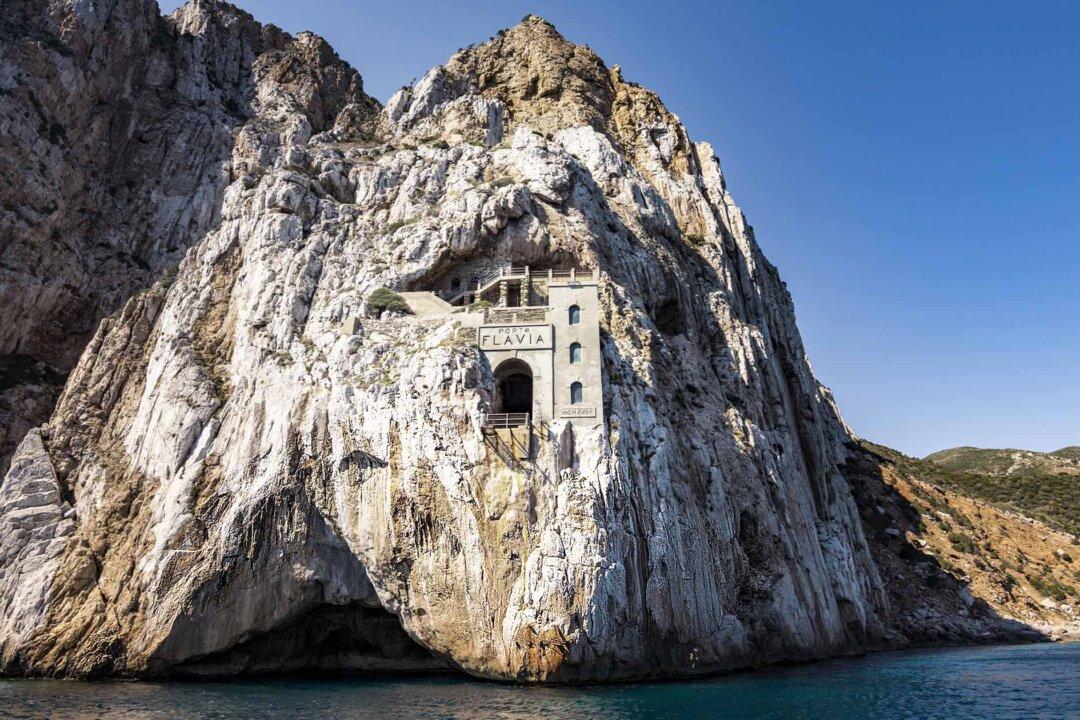A prominent tower stands like a sentinel over a majestic ocean panorama where steamships once moored alongside a cliff to await receiving their cargo.
Mounted on a rock shore, this abandoned Italian port is a marvel of 20th-century engineering—not to mention a perch with a view like no other. Porto Flavia, located on the southwest coast of Sardinia, features a photogenic front with a tunnel laying 52 feet over the lapping sea. The interior of what once was a mining hub extends deep into the rock and reaches up atop the cliff.






